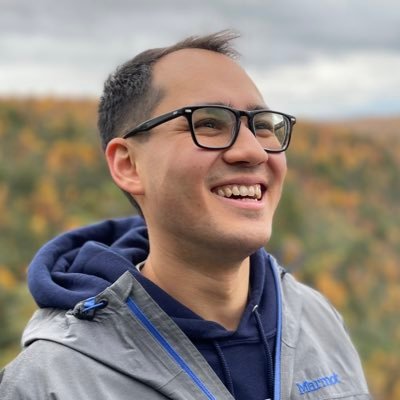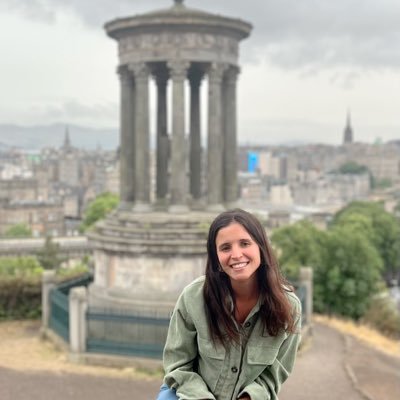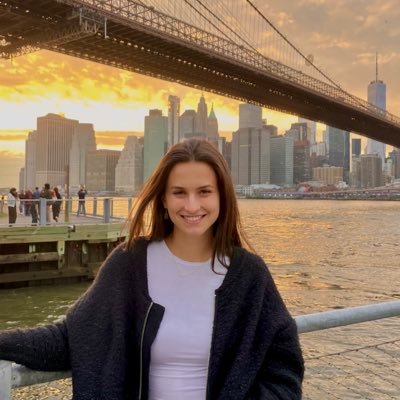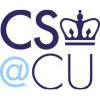
John Bostanci
@JohnBostanci
Followers
271
Following
366
Media
17
Statuses
109
Finance bro turned CS theorist
Joined February 2020
BREAKING NEWS The 2025 #NobelPrize in Physiology or Medicine has been awarded to Mary E. Brunkow, Fred Ramsdell and Shimon Sakaguchi “for their discoveries concerning peripheral immune tolerance.”
468
12K
29K
🚨 ASCrypto 2025 is here! 🗓️ Sept 29–30 | Medellín | Affiliated with Latincrypt 👨🏫 Learn 𝐦𝐨𝐝𝐞𝐫𝐧 𝐩𝐫𝐨𝐯𝐢𝐧𝐠 𝐬𝐲𝐬𝐭𝐞𝐦𝐬 from top experts 💥 2 days, 3 modules: IVC, STARKs, MPC 👥 With @benediktbuenz, Sophia Yakoubov, @aszepieniec 👇
2
23
54
Last week at BIRS: Frontiers in Quantum Cryptography: New Functionalities, Primitives, and Foundations https://t.co/OKGc8TC9Yv
0
3
4
I have a new paper out: "Quantum Circuit Lower Bounds in the Magic Hierarchy".🔮🪜 https://t.co/jhWR5WBq4g a thread:
3
15
96
@preskill A beautiful result! It should be clarified, though, that the construction came from our paper ( https://t.co/lWnH4GWfSS) -- Robert and Fermi came up with a wonderful way to *analyze* it to show adaptive security. (We proved non-adaptive security).
arxiv.org
Uniformly random unitaries, i.e. unitaries drawn from the Haar measure, have many useful properties, but cannot be implemented efficiently. This has motivated a long line of research into random...
0
4
51
NY Theory Day is returning on Friday April 11 at Columbia! It's free to attend but you have to register on the website by April 4. We have a great speaker lineup: Rachel Cummings (Columbia) Bill Kuszmaul (CMU) Nick Spooner (Cornell) Ryan Williams (MIT) https://t.co/wIpmDnhwf3
1
5
32
Our sixth short plenary is a merged talk about stabilizer bootstrapping, and learning the closest product state! (papers: https://t.co/RXJ4JXRsvA,
https://t.co/7VENYlPtml). Overview below. @sitanch @gong_weiyuan @AineshBakshi @JohnBostanci @ewintang @jerryzli @BooleanAnalysis
0
2
10
Super excited for ITCS next week! Looking forward to meeting people and attending great talks! 😃
0
0
6
I'm proposing a moratorium on using the Aaronson-Kuperberg oracle in any future quantum query separations. It is just too powerful and not pushing our query complexity research in the right direction!
2
2
20
As I’ve said many times, the theory group at Columbia is awesome! 😁 Also the student seminar happens (mostly) every week 😃
Profs from the Theory group are looking for #PhD students! Find out more about our faculty and their research - https://t.co/SBWFanbTU6 For info on our #computerscience PhD program - https://t.co/Mfln4FEtnR. The deadline is December 15.
0
0
11
If you're interested in cryptography and quantum information, James Bartusek is looking for students! Find out more about him here - https://t.co/V62NYVo53z. For info on our #PhD program - https://t.co/Mfln4FEtnR. The deadline is December 15.
0
7
30
Natalie Parham (@nat_parham), a PhD student who I am proud to call myself an advisor to, is one of the recipients of the Google PhD Fellowships in Quantum Computing. Congrats Natalie! Here's a nice Q&A with her: https://t.co/De4Usg1ClV. Be on the lookout for what she does next.
0
7
113
I’ve had an amazing time working with everyone on this project! Check out the full paper here 📄
0
0
7
We also apply our approach to a few different settings to get super fast algorithms, including an almost quadratic time algorithm if the input is promised to be close to product!
1
0
1
It turns out the problem of extending our set of candidates by a qubit is an interesting algorithmic problem itself, we solve it by reducing to constrained polynomial optimization!
1
0
1
We propose an approach that threads the needle, building up global structure using *local* updates. At every step, we maintain a set of candidate product states that are both good approximations to the prefix of the input state, and also far from each other.
1
0
1
The example highlights one barrier to learning even simple classes like product states: a successful algorithm needs to end up learning something about the global structure of the input state, while navigating the exponentiality of the concept class.
1
0
1
The real closest product state is ≈0^n, but this can’t be seen from the marginals. For example, the top eigenstate of one marginal is slightly rotated away from 0, leading to an *exponentially worse* fidelity across the entire state.
1
0
3
Let’s first see why this problem isn’t as easy as one might first expect. Imagine you got the following state as input (remember the input doesn’t need to be product), and tried to learn the closest product state only using the 1-qubit marginals:
1
0
4











